
RIBA announces 2017 Stephen Lawrence Prize shortlist
By Justine Testado|
Wednesday, Sep 6, 2017
Related
RIBA announced the six projects shortlisted for the 2017 Stephen Lawrence Prize. The Marco Goldschmied Foundation established the yearly prize in 1998 in memory of aspiring architect Stephen Lawrence. It distinguishes top-notch architectural projects with a construction budget of less than £1 million.
The six contenders include a converted factory art venue, a timber forest management center, and a charming residential house designed to look like an upturned ship's hull. The winner will be announced during the 2017 RIBA Stirling Prize party in London on October 31.
Take a gander at the shortlist below.
The Compound, Birmingham by BPN Architects: Former textile factory transformed into an art venue, workshop space, and the client's home.


RELATED NEWS How BPN Architects transformed this former textile factory into The Compound

Jury Citation excerpt: “The governing design principle is to bring old spaces back in use with minimal intervention by mixing original textures with modern elements and contemporary art. [...] The client is a collector of modern art and is an artist himself with a passion for finding old objects in scrap yards and upcycling them in most unpredictable ways. The project demonstrates a keen understanding and a lively interpretation of the history of the local area and its industrial heritage. It gets under the skin of ‘making things’ and celebrates craftsmanship and a beauty of honest and purposeful spaces and objects.”
Fallahogey Studio, Kilrea, Northern Ireland by McGarry-Moon Architects - Studio space built within the garden of the architects’ house
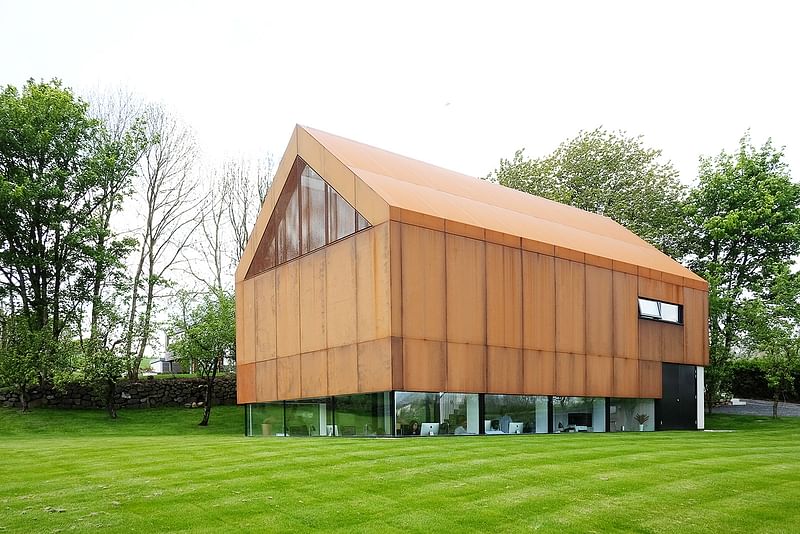
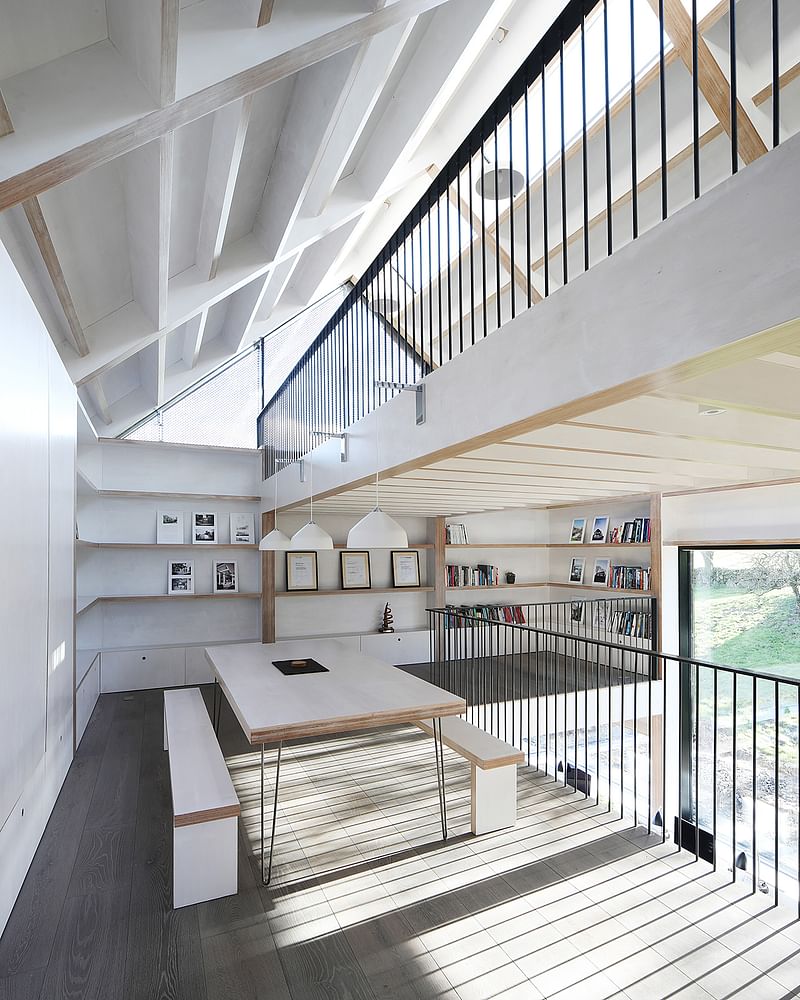

“Fallahogey Studio is set within the garden of the architects’ award winning house in the gently rolling countryside south of Kilrea, and is composed of a modestly scaled single form referencing and continuing the tradition of metal-skinned agricultural sheds, barns and outbuildings, which prevail throughout the local countryside. The programme required a studio space for their growing practice.”
Houseboat, Poole, Dorset by Mole Architects with Rebecca Granger Architects - New nautical-inspired residential house overlooking Poole harbor
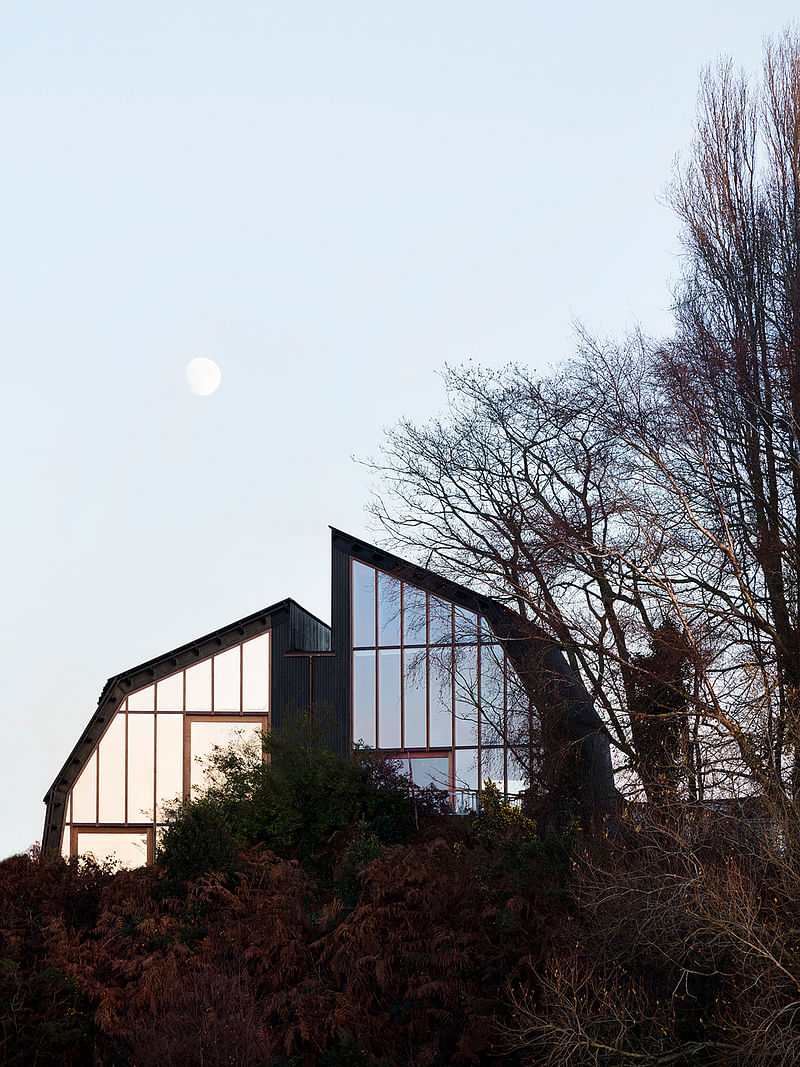

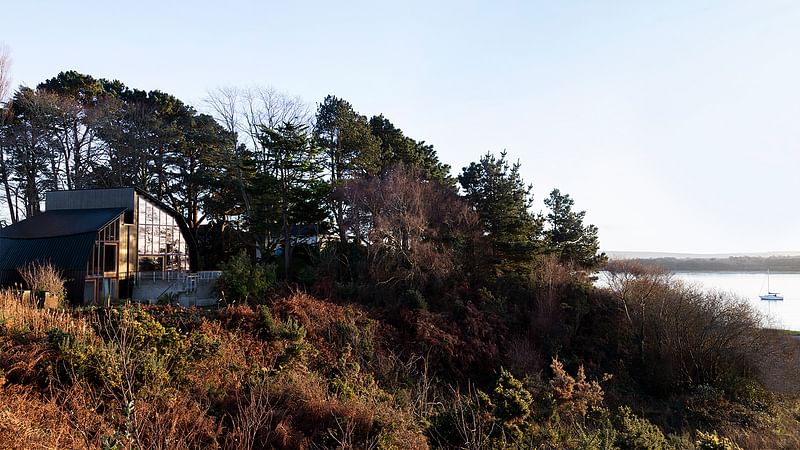
“A simple concept of split-level and open plan living accommodation is layered over a lower level of private and acoustically treated bedrooms. The living spaces soar under the hull-like forms of the roof. Externally the black stained timber larch boards sit above the exposed concrete base. The organic form of the house, together with the staggered section and spectacular site has created a house of originality and delight. The client lives in an adjacent house, which provided the building plot for the Houseboat.”
Peacock House, Aldeburgh, Suffolk by BHSF Architekten with Studio-P - Suburban courtyard home with studio space for a private art collection
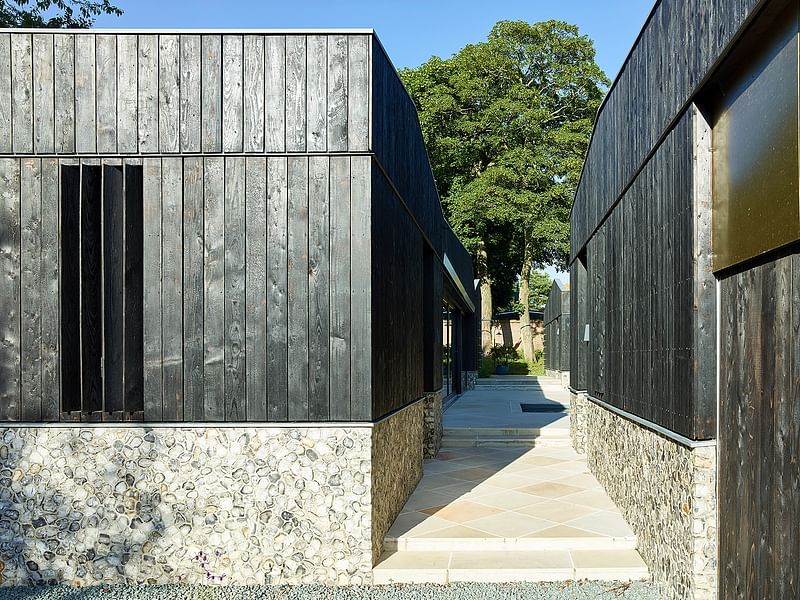
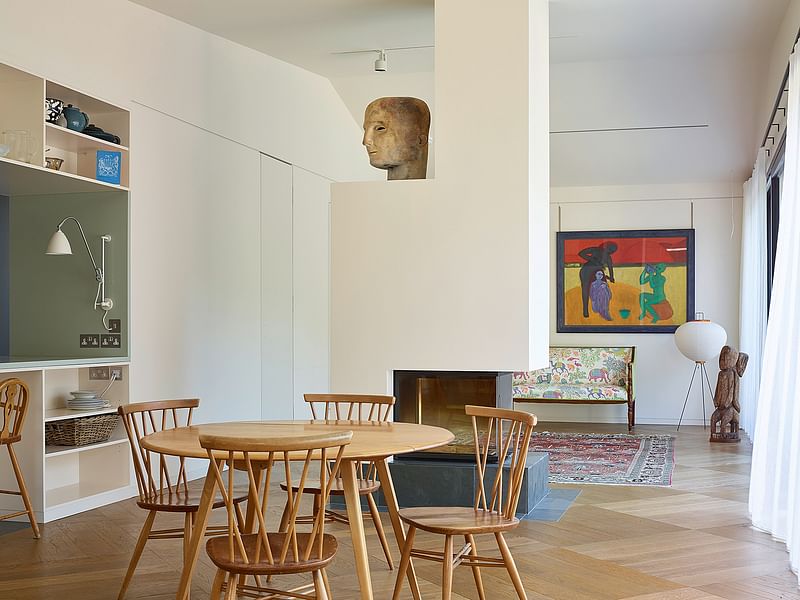

“This is a house that, with an opaque outside, conceals a series of wonderful internal and external spaces that are delightful and extraordinarily consistent in their detailing. On arrival very little is revealed other than the horizontal layering of materials consisting of a flint base and timber panelled middle, visually separated from a similarly panelled upper roofscape by a simple flashing detail. [...] These datum levels serve as a constant reference point, help create vistas and play with perspective against terraces and floors that rise over the depth of the site.”
Silver House, Swansea, Wales by Hyde + Hyde Architects - A concrete, timber and steel-layered family home overlooking the Bristol Channel

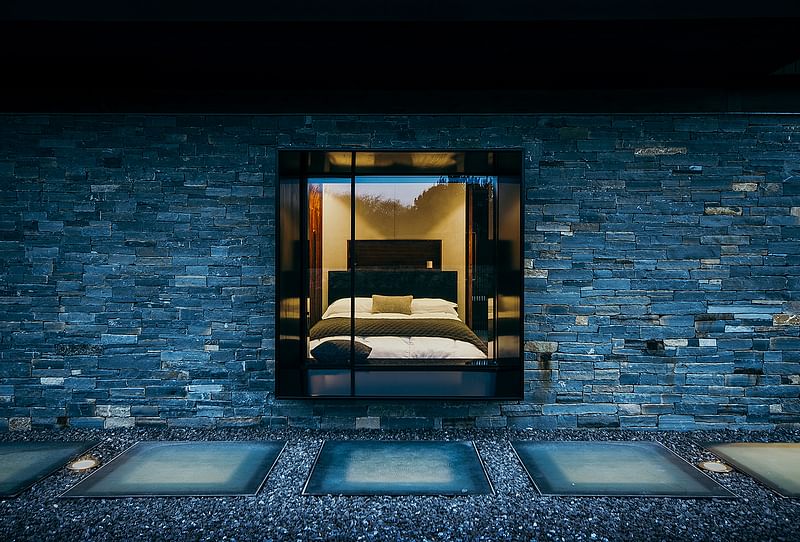
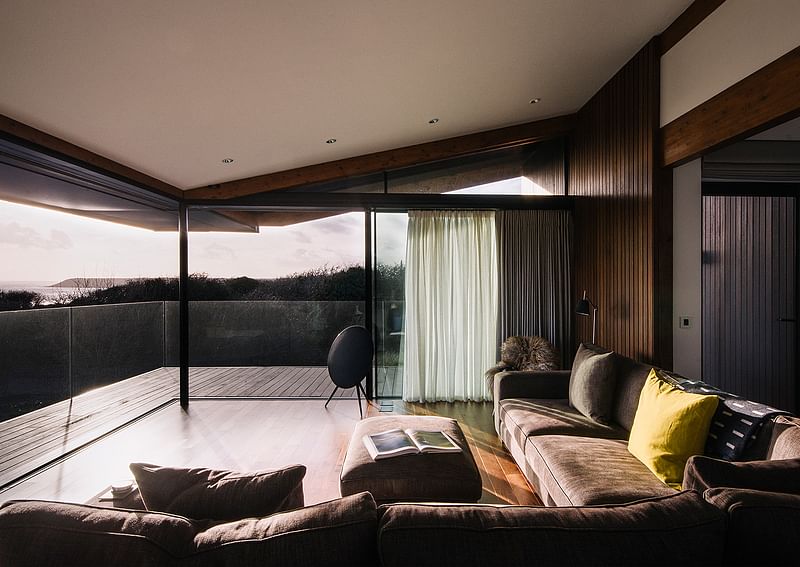
“This is a very elegant and thoughtful piece of architecture with great conceptual clarity. While it is rigorous in resolution it retains an air of easiness and is wholly comfortable in its context. [...] As a family home the accommodation is layered, dens in the basement, bedrooms on the ground floor and living room and master bedroom on the first floor. [...] The thoughtfulness and care invested in composing this building is echoed in the meticulous detailing – both inside and out.”
Wolfson Tree Management Centre, Tetbury, Gloucestershire by Invisible Studio - Twin timber buildings for housing equipment and staff facilities at the National Arboretum

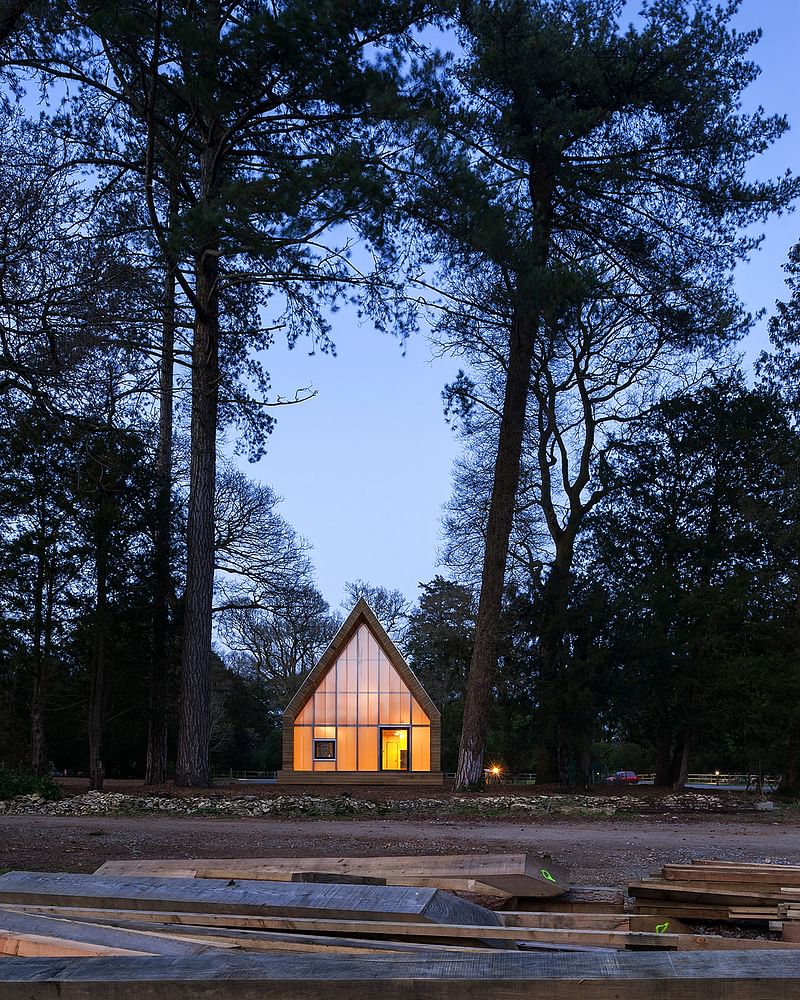

“The engineering objective for the building was to efficiently use timber from the arboretum; with all processing taking place on site minimizing transport and processing costs. The timber was hand hewn by volunteers on site, graded on site, and used in an untreated and unprocessed way. Seven handmade giant trusses form the roof structure of the machine shed, the bottom string of each truss is fashioned from a single tree, its natural curvature utilized for optimum structural efficiency. These trusses allow for a column free space essential for the easy maneuvering of tractors and equipment.”

RELATED NEWS 2016 Stephen Lawrence Prize awarded to House of Trace

RELATED NEWS Niall McLaughlin Architects' Fishing Hut wins the 2015 Stephen Lawrence Prize

RELATED NEWS The 2014 winners of the Manser Medal and Stephen Lawrence Prize

RELATED NEWS RIBA shortlists 6 buildings for 2017 Stirling Prize


Share
0 Comments
Comment as :